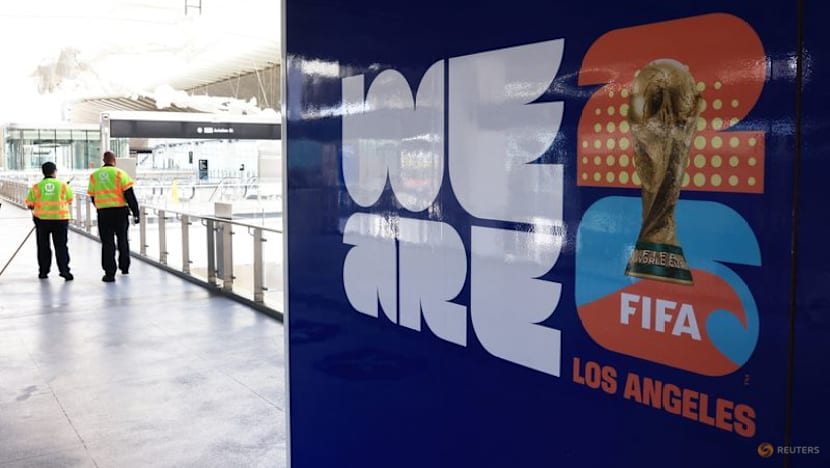Extreme heat a rising threat to 2026 World Cup venues, says report

FILE PHOTO: A sign promoting the World Cup in 2026 is shown at a newly opened metro stop at Los Angeles International Airport, after it was announced the World Cup draw would be held at the "Trump-Kennedy Center" in Washington, D.C. on December 5th, in Los Angeles, California, U.S. August 22, 2025. REUTERS/David Swanson/ File Photo
LONDON : The 2026 World Cup could be North America's last without urgent climate adaptation measures, according to a new study highlighting extreme weather threats.
The "Pitches in Peril" report, compiled by Football for the Future, Common Goal and Jupiter Intelligence, found that 10 of the 16 venues are at very high risk of experiencing extreme heat stress conditions.
By 2050, nearly 90 per cent of North America's host stadiums will require adaptation to extreme heat while one-third will face water demand equalling or exceeding supply.
The report also highlighted risks to 2030 and 2034 World Cup venues and examined the impact of a warming climate on grassroots soccer pitches once used by 18 iconic players.
"As someone from Spain, I can't ignore the climate crisis," said Spain's World Cup-winner Juan Mata, referencing last year's devastating Valencia floods.
"Football has always brought people together, but now it's also a reminder of what we stand to lose."
This year's Club World Cup in the U.S. offered a troubling preview, with conditions described as impossible by players.
The tournament saw extreme heat and thunderstorms force world soccer's governing body FIFA to adapt protocols - adding cooling and water breaks, shaded benches and air fans.
According to the report, 14 of the 16 World Cup stadiums in the U.S., Canada and Mexico exceeded safe-play thresholds in 2025 for at least three major climate hazards - extreme heat, unplayable rainfall and flooding.
Thirteen already experience at least one day each summer exceeding FIFA's threshold for drinks breaks of 32°C Wet-Bulb Globe Temperature (WGBT) - an internationally recognised index used to measure human heat stress in direct sunlight.
Temperatures in Atlanta, Dallas, Houston, Kansas City, Miami and Monterrey exceeded that mark for two months or more.
Ten experience at least one day each summer with a WBGT of 35 degrees - identified by climate scientists as the limit of human adaptability to extreme heat, with Dallas (31 days) and Houston (51) worst hit.
While Dallas and Houston stadiums will mitigate heat with roofs, climate risks extend beyond elite venues.
The report says forward Mo Salah's Egyptian home ground could face more than a month of unplayable heat annually, while Nigeria captain William Troost-Ekong's childhood pitch could see 338 days of extreme heat by 2050.
"As we move further into the decade, risks will continue growing unless we take drastic measures, such as moving competitions to winter months or cooler regions," said Piers Forster, director of the Priestley Centre for Climate Futures in Leeds.
The 96-page report urges the soccer industry to commit to net-zero by 2040 and publish credible decarbonisation plans and calls on tournament organisers to create adaptation funds.
It also said 91 per cent of 3,600 fans polled across the three hosts want the 2026 World Cup, the largest ever edition, to be a sustainability role model.
However, with 48 nations and 104 matches spread over a vast continent, a recent report by Scientists for Global Responsibility (SGR) in conjunction with Environmental Defense Fund and the Sport for Climate Action Network, said it will be the most "climate-damaging" ever.













